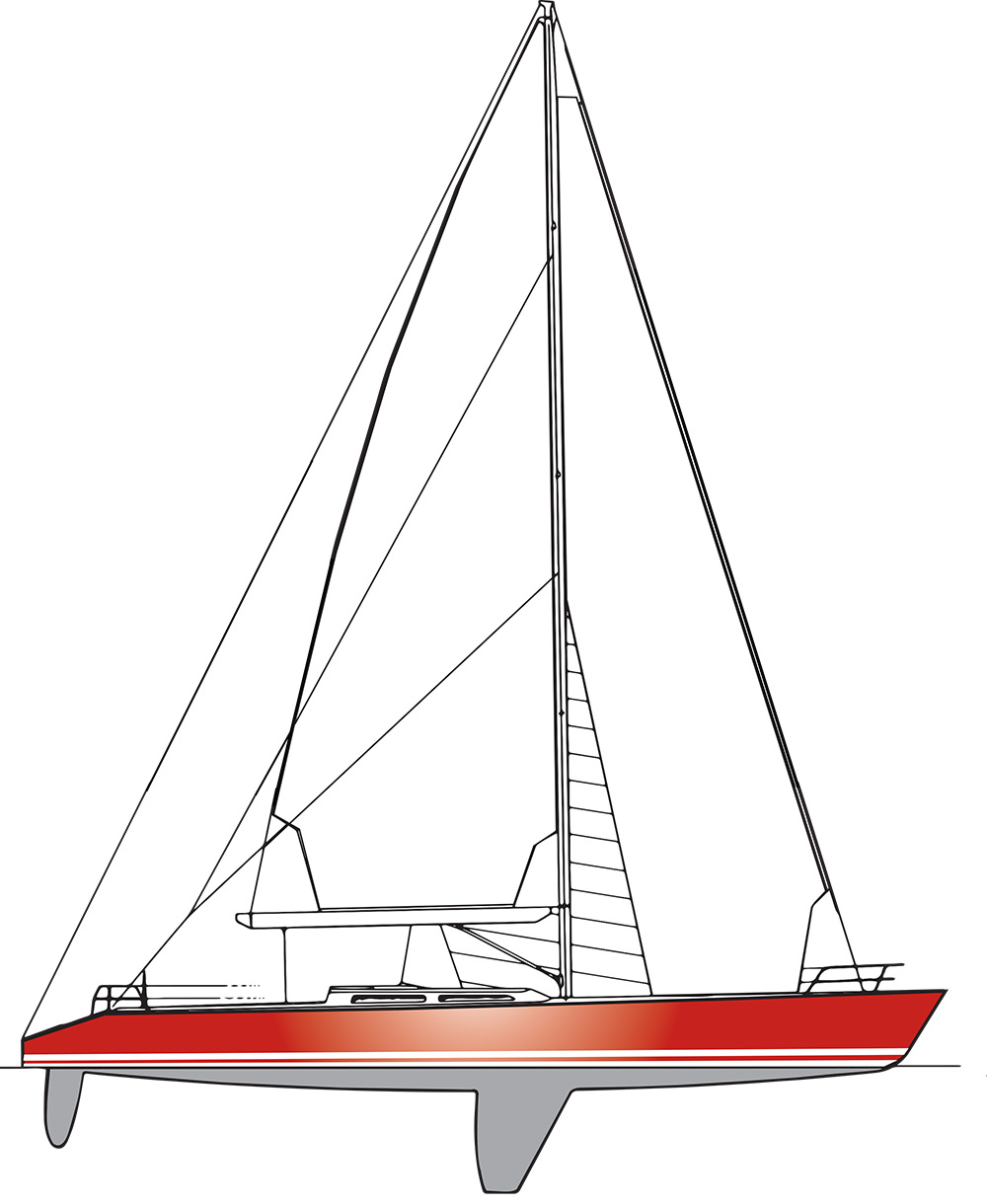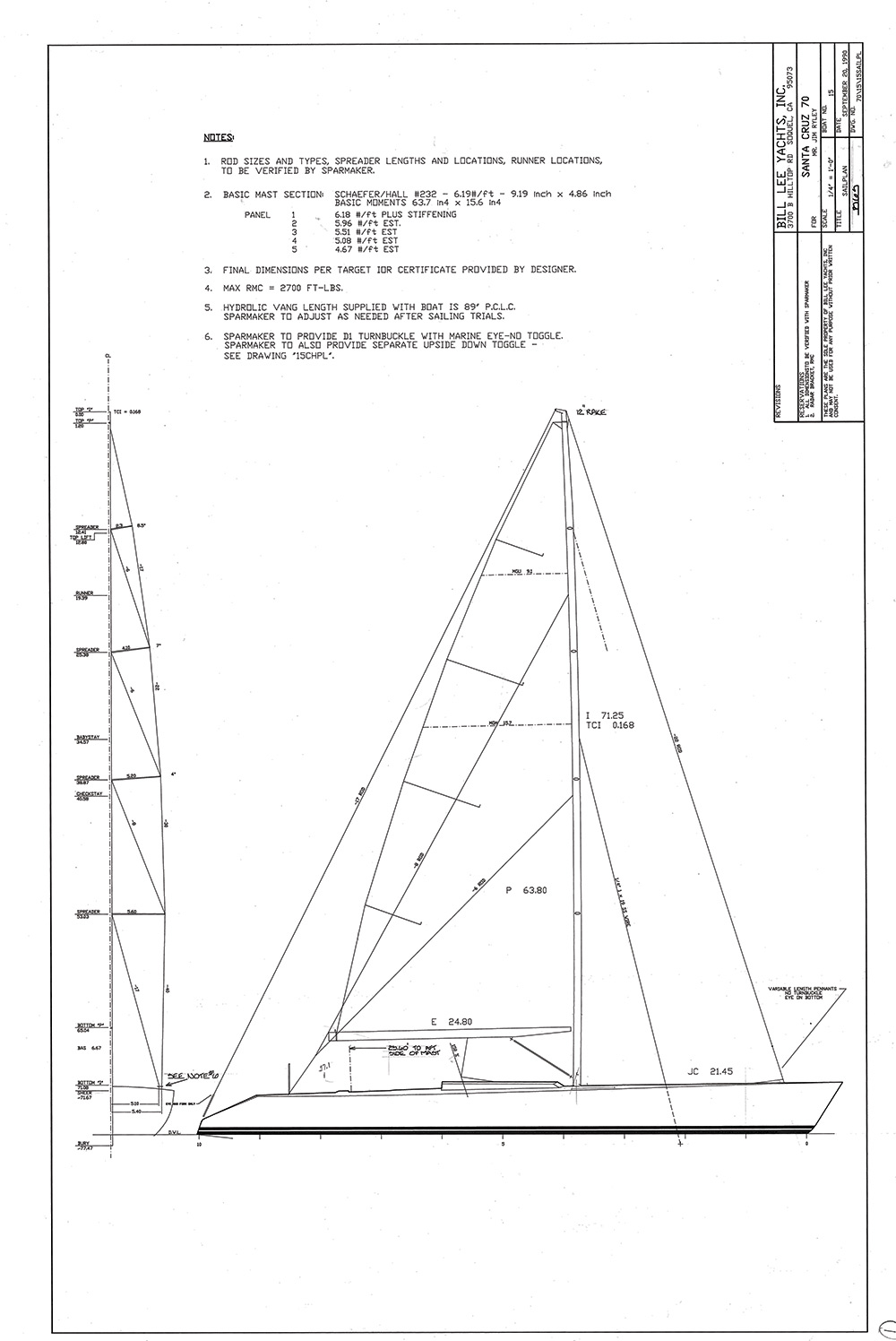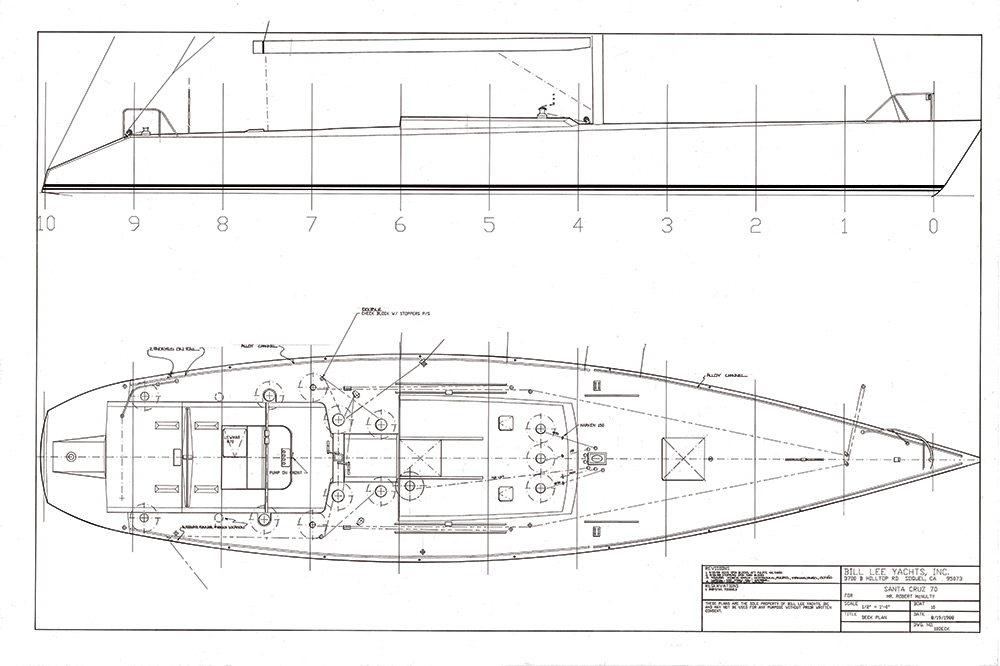Santa Cruz 70
The first and second child of the ULDB movement and the wizard Bill Lee
Editor's note: This Perry on Design review is part of a special column featuring important designs from the last 50 years as part of SAILING Magazine's 50th anniversary celebration. Read more about Bob Perry's more than four decades as SAILING's technical editor here.

Now we come to the boat I chose as the most noteworthy racing boat of the last 50 years. This was a hard choice. I chose Bill Lee’s design Merlin. But Merlin was not designed to the IOR so Merlin was quickly followed by another Bill design, the Santa Cruz 70, essentially an IOR-friendly version of Merlin. Why are these boats so important? Four words: Ultra Light Displacement Boat or ULDB.
In 1970, 26-year-old Bill Lee had the idea that a fast boat for racing out of Santa Cruz would be a 30-foot version of a 505 dinghy. So he designed and built Magic. The boat was locally successful and Bill received a commission for a 35-footer named Witchcraft. This was a sistership to a boat Bill Lee designed and built for himself, a 40-footer named Panache. Bill entered the boat in the Transpac but was beaten by another boat he had designed, Chutzpah, a 35-footer.
Bill’s secret was to keep the boats small and as light as possible so they would plane. But Bill wanted to own the record for the Transpac and that would take a bigger boat. In 1976 Bill designed Merlin at 66 feet 6 inches LOA and 25,000 pounds, for a D/L of about 49.17. This was a purpose-built boat designed to excel off the wind on long races. As far as I recall, there was nothing like it at the time. The typical 66-foot IOR boat of the day would have weighed more than twice as much as Merlin and only under very favorable conditions could one expect the IOR boat to surf briefly. Merlin changed everything for downwind racing. The ULDB approach would become so dominant that today pretty much every race boat you can think of has ULDB-type numbers.
“In 1976 when Merlin was designed, there was no rating limit for Transpac,” Bill said. “She was designed as a Transpac first to finish boat and to the ‘Boatspeed per Dollar’ rule. So given a limited budget and the only objective being downwind speed, so back to basics, the solution was to form the materials and sail budget into a long, skinny, light boat. In 1977, she was out the door for $135,000. Race prep and doing the race were another $20,000. Nowadays it takes multimillions to try to break the Transpac course record. The IOR existed at the time, and was the rating rule for the race. Merlin only rated 70.5 in 1977, though that was unimportant at the time. It is interesting to note that for the 1977 race, the eleven light-displacement boats were split out into a separate division.”

Bill built 19 Santa Cruz 70s. They were all optimized a little differently to the owner’s wishes and I think it’s safe to say they gave birth to the “California sled” fleet of 70-rating IOR boats. These boats were dominant in Southern Californian racing. Bill has recently bought Merlin and is restoring it to its original configuration. I suspect we will see Merlin on the racecourse again soon.
I asked Bill which designers he was watching when he developed his first boats. He had sailed on a Bill Lapworth boat in the 1960s called Flying Scotsman, a Lapworth attempt at an offshore racing version of an International 14 dinghy. But it was considerably heavier than what Bill Lee had in mind. So remarkably the

answer to my question is really nobody. Bill “The Wizard” Lee had pushed into this area of extreme light-displacement, off-the-wind boats pretty much all on his own. For me this means that whenever I think of ultralight displacement I will think of Bill Lee. Bill’s motto is “Fast is fun.”
I think the real fun of doing this review was the time I spent on the phone talking to Bill.
LOA 68’; LWL 62’; Beam 15’1”; Draft 9’; Displ. 24,000 lbs.; Ballast 9,600: Sail area 1,555 sq. ft.; SA/D 20.36; D/L 59.6; L/B 4.63; Auxiliary Yanmar 140 hp; Fuel 200 gal.; Water 150 gal.; First built 1985; Originally reviewed September 1990
Read Perry's other picks for the four most influential designs of the past 50 years here:

Comments